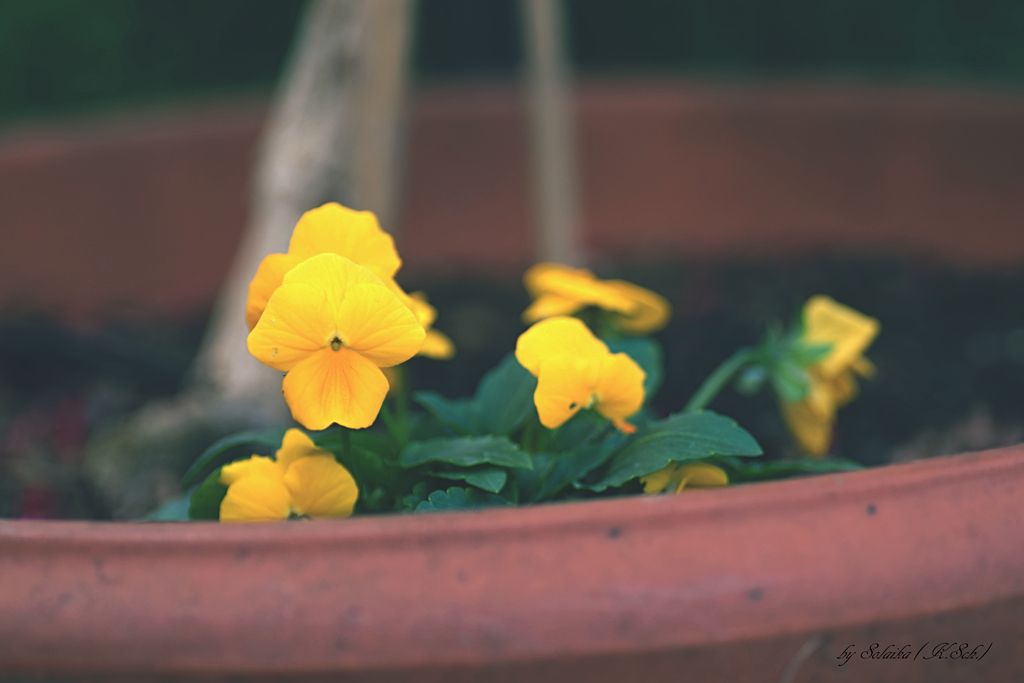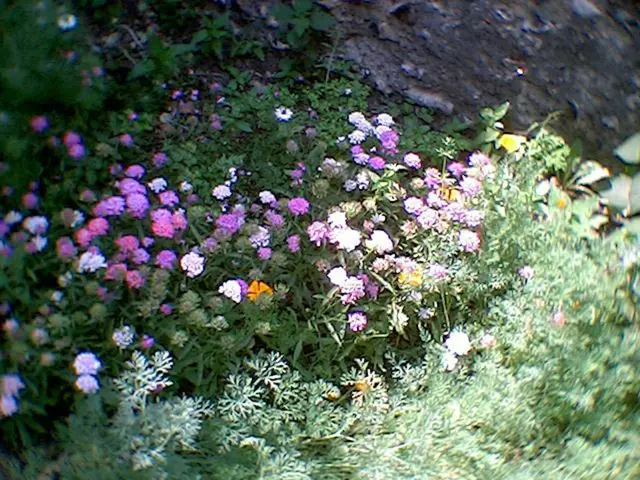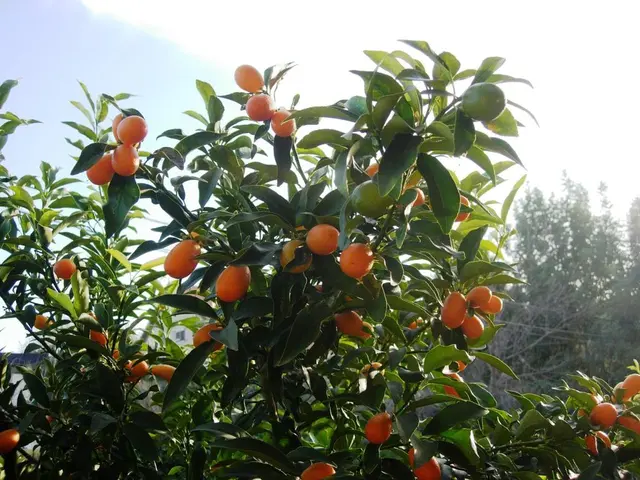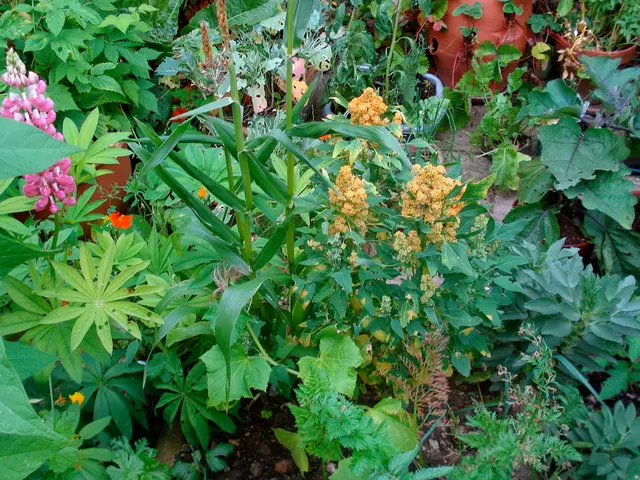DIY Orchid Fertilizer Tuned-Up Blooms: Simple Recipe Enhancing Plant Vigor
Casual Orchid Nutrition:
An Orchid may not be a typical troublemaker, but getting it to bloom is no walk in the park. Though seldom hard to maintain, the real challenge lies in having it rebloom. Providing the right nourishment is crucial for healthy growth and exquisite blooms. While it's common to rely on expensive store-bought products, homemade orchid fertilizers can work just as wonders - and they're usually free.
When it comes to feeding an Orchid, pot-bound ones, in particular, need a nutrient boost since they deplete the potting mix over time. Unlike their natural habitat, where they take nutrients from decaying plant matter, domestic Orchids rely on us for sustenance.
Here's a fun and natural approach to Orchid care: try making your own fertilizer! The ingredients are mostly organic and can be combined to cater to different nutritional requirements.
Orchid Nutrition Basics
While there are various Orchid species, most follow the same general growth pattern and respond well to similar feeding regimes. It is essential to feed an Orchid during its active vegetative growth phase, before flowering.
Orchids thrive on weak feeding, given their sensitivity to overfeeding. Feed your Orchid every week for three weeks during active growth, followed by a week of plain water.
Once the Orchid begins to produce flower buds or goes dormant following blooming, nutrients should be withheld.
Like other plants, Orchids require three main macronutrients - nitrogen for leaf growth, phosphorus for root and flower development, and potassium for overall growth and health. They also need several micronutrients, such as calcium, magnesium, iron, copper, zinc, sulfur, manganese, and molybdenum.
Choosing Between Store-Bought and Homemade Fertilizers
Orchids are more vulnerable to over-fertilization than other plants. While commercial fertilizers can yield good results with careful usage, it is safer to lay off during the Orchid's dormant period, bud development, and post-repotting phase.
Using homemade mixtures can be a safer bet, especially considering their lower nutritional density, which reduces the risk of overfeeding. The downside is that balancing the nutrients can be tricky, with the possibility of under-feeding your plant. However, combining ingredients and maintaining a consistent routine can help mitigate issues.
Homemade Orchid Fertilizer Ingredients
You'll find many essential nutrients for Orchid growth right in your kitchen or medicine cabinet! Here are individual ingredients that can help you gently feed your Orchid:
- Eggshells supply calcium, a micronutrient that promotes strong plant cell walls and overall healthy growth. Sprinkle crushed, dry eggshells into the Orchid's growing medium. Each time you water it, the eggshells will release a little bit of calcium.
- Banana Peels can be used to make a potassium, phosphorus, and calcium-rich "tea." To make the tea, steep chopped-up banana peels in water for a few days. This allows the nutrients to leech out, creating a nutrient-rich "tea" that can be diluted and used to water your Orchid.
- Milk contains all the macronutrients an Orchid needs, plus calcium and magnesium. Use one part milk to four parts water for a balanced fertilizer that can be applied every couple of weeks.
- Rice Water is rich in macronutrients, micronutrients, and starch, which are beneficial for Orchid root growth. Save the water you cooked rice in to create a rich fertilizer for Orchids. Allow it to cool before applying it to your Orchid. Using brown rice instead of white rice provides even more nutrients.
- Blackstrap Molasses offers calcium, magnesium, manganese, iron, and potassium. Use a ratio of about one teaspoon of molasses to one gallon of water for a fertilizer. In addition to feeding your Orchid, this mixture also nourishes beneficial microbes.
- Black Tea is a natural way to add more nitrogen to homemade Orchid fertilizer. Many commercial fertilizers use urea as the nitrogen source, but Orchids cannot access nitrogen this way. Tea provides an alternative method to supply more accessible nitrogen. Use cooled black tea about once a month to feed your Orchid nitrogen.
Combine two or three of these ingredients to ensure your Orchid gets a good mix of nutrients. If you're not sure where to start, try my bone meal Orchid fertilizer recipe.
My Bone Meal Orchid Fertilizer Recipe
Bone meal is handy for many plants and can be made using dried chicken bones, which offer macronutrients, calcium, and magnesium. To make your own bone meal, let the bones dry completely, crush them into a sand-like consistency, and combine them with milk for a calcium and macronutrient boost. Add a tablespoon of molasses for potassium, mix with rice water to thin the mixture, and strain the mixture before using it as a diluted, weekly orchid fertilizer.
Can I Use Homemade and Store-Bought Fertilizers Together?
If you understand the composition of the products and homemade recipes you're using, it is possible to successfully combine them for optimal plant health. However, be cautious, as it's also easy to overfeed in this manner. The safest approach is to choose one or the other.
More Orchid Knowledge
- Wrinkled Orchid Leaves: Discover the 5 common causes and learn how to revive their vitality.
- Orchid Shopping Spree: Browse our platform Shop for hard-to-find houseplants, premium containers, and innovative accessories.
- Rare Orchids: Find out about 8 fascinating Orchids that make excellent houseplants - some are surprisingly easy to grow.
- Ice Cube Watering: Learn the pros and cons of the controversial method of watering Orchids with ice cubes.
- Gardening Tips and Inspiration: Sign up for our platform Newsletter to receive gardening advice, houseplant tips, and inspiring content straight to your inbox.
Mary Ellen EllisMary Ellen Ellis, with degrees in Chemistry and Biology, has been gardening for over 20 years. Her specialties include flowers, native plants, and herbs.
An individual can create a fun and natural approach to Orchid care by utilizing homemade fertilizers made from kitchen components for a more organic approach. These homemade mixtures, such as eggshells for calcium, banana peels for potassium and phosphorus, milk, rice water, blackstrap molasses, black tea, and bone meal, provide essential nutrients for Orchid growth without the risk of over-feedings often associated with commercial fertilizers.
In a home-and-garden lifestyle, incorporating gardening practices and cultivating Orchids can bring a touch of nature indoors, contributing to a lush and thriving living space.








